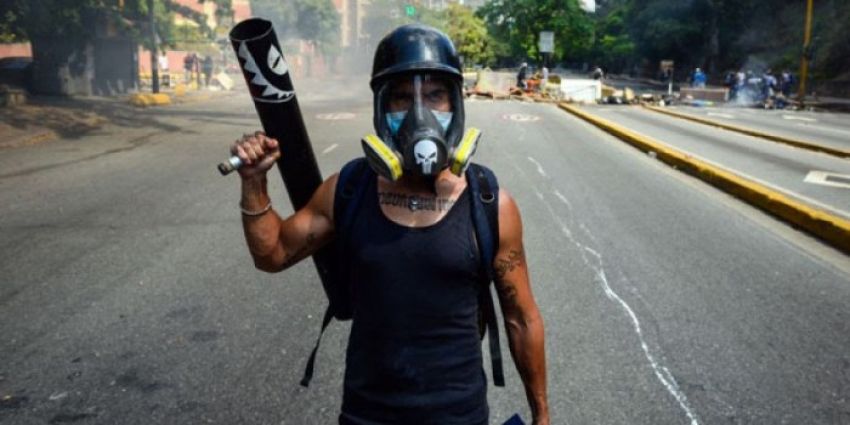
A few days after arriving in Venezuela, we drive past La Carlota military base in the east of Caracas, which was a regular site for the violent street protests commonly known here as guarimbas.
The highway we were travelling on was often blockaded by protesters — guarimberos — who made up the backbone of the self-dubbed “La Resistencia”. They received glowing praise in the international media during the wave of protests that rocked the country from April to July.
In June, these guarimberos penetrated into the base and attacked it with homemade weapons and firebombs.
These protesters, overwhelmingly young men, were equipped with gas masks, helmets, bulletproof vests, shields, Molotov cocktails and an assortment of weapons. Such outfits are not cheap; clearly someone was paying for all this.
A mixture of disaffected youth and paramilitaries, they generally protested from 9am until 6pm (though usually not on the weekend) and were paid daily. The amount depended on the audacity of the attack.
Locals from Lara state, which is run by an opposition governor, recounted to me how a white truck would appear before the protests to dish out drugs, alcohol and money for waiting youth. They said the governor is now apparently bankrupt because of the amount of money he spent on the guarimberos.
A friend from Tachira, a border state that is also governed by the opposition, told me how she was kept hostage for three weeks, unable to leave her home to buy food, water or gas to cook, or to attend to her studies, go to work or visit friends. Armed youth stationed themselves outside her apartment block and made sure no one could leave.
The guarimberos would go door-to-door, asking for food and money to support their cause — the overthrow of elected President Nicolas Maduro. If you did not give them food, they would smash your windows.
Of the 300 families in her building, about 15 people actively supported the guarimberos. In general, my friend said, “people don’t want to get involved, they just want to go about their business.”
During these four months of opposition protests, government supporters — Chavistas — remained largely silent as most did not want to provoke the guarimberos for fear of the potentially deadly reprisals.
Since July 30 — the day Venezuelans voted for the Constituent Assembly — the guarimbas have stopped and country has experienced a month of relative peace.
In a seemingly strange twist of policy, the opposition has decided to participate in regional elections for governors, which have been set for October.
But such twists are nothing new for an opposition that has tried every conceivable means — from guarimbas to coups to economic warfare – to overthrow the Maduro government. As such, it is unlikely that Venezuela has seen the last of the guarimberos.